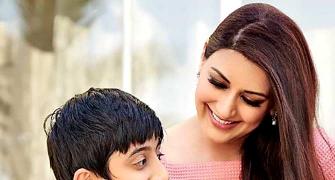Though breast cancer is the most common among women, it can also occur in males, because of the presence of mammary tissue in males, warns Dr Mohit Agarwal.

According to data released by National Health Profile 2019, incidences of common cancer in India increased by 34 per cent between 2017 and 2019.
Despite this, the awareness level among people is poor.
Most Indians ignore the first warning signs and risk their health until it is too late.
Here, Dr Mohit Agarwal decodes some of the most popular myths surrounding cancer and how it affects your health.
#1 Myth: Breast cancer cannot occur in males.
Fact
Though breast cancer is the most common cancer in women, it can also occur in males (rarely), because of the presence of mammary tissue in males.
Risk factors being increasing age, hormonal exposure (due to obesity, medicinal use, liver disease), Kline filter syndrome, genetic mutation (e.g. brca), radiation exposure.
Common symptoms include lump in breast or underarms, pain, inverted nipple, discharge, sore nipple etc. Management is same on the lines of female breast cancer.
#2 Myth: Most of the breast cancer runs in families.
Fact
Patients diagnosed with breast cancer, are usually concerned that their daughters or other family relatives would be at risk.
On the contrary, patients are sometimes surprised that how have they been diagnosed with disease, since no in the family has breast cancer.
Breast cancer is hereditary only in about 10% of cases. Majority of cases are sporadic
#3 Myth: I have normal blood tests -- hemogram, kidney function tests and liver function tests? I cannot have breast cancer.
Fact
Solid tumour including breast cancer may not affect blood tests or may affect only in late stages. Hence normal blood tests do not rule out breast cancer.
#4 Myth: Breast cancer diagnosis means death sentence.
Fact
Breast cancer is curable provided it is detected early.
Breast being a peripheral tissue, lump is usually felt early.
If detected at local stage, breast cancer is completely curable. Crux is early diagnosis and appropriate treatment
#5 Myth: No lump means no breast cancer.
Fact
Though lump is the most common sign of breast cancer, but sometimes lump is too small or cannot be felt.
Hence annual mammogram is an essential tool for screening and physical examination cannot substitute mammogram
#6 Myth: Breast cancer screening is costly.
Fact
Breast cancer screening involves self-examination, clinical breast examination.
Mammogram is an inexpensive test. It is basically an x-ray of breast, should be done annually after the age of forty years for individual with average risk.
Ultrasound of breast sometimes may be required.
#7 Myth: More sugar in diet increases chances of breast cancer.
Fact
There is a common myth that more sugar in diet fuels cancer growth.
Though cancer cells utilise more sugar as compared to normal cells, studies have shown there is no link between growth of cancer cells and sugar intake.
#8. Myth: Wearing a bra or carrying cell phone in bra causes cancer
Fact
There has been myth that wearing a bra especially underwire one, obstructs the lymphatic flow, increasing chances of breast cancer.
There is no evidence to suggest this.
Also, there has been concerns about radio-frequency waves exposure, increasing chances of breast cancer, but no studies to prove it.
However, considering it an electronic device, for several other safety reasons, it is best to store them away from your body.
#9. Myth: All breast cancers are treated the same way
Fact
Breast cancer treatment depends on the stage and nature of disease.
Treatment modalities include surgery, chemotherapy, hormonal treatment, targeted therapy and radiotherapy.
Different modalities are used in different patients as per their tumour stage and characteristics.
In a nutshell, two ladies with same age, weight and stage of breast cancer might be treated differently as per tumour characteristics.
#10. Myth: Breast cancer chemotherapy is painful
Fact
Chemotherapy administration is a painless process.
11. Myth: Hair loss is permanent during chemotherapy
Fact
Hair loss is transient during the complete course of chemotherapy. All hair growth returns to normal after few months of completion of chemotherapy.
Dr Mohit Agarwal, additional director and head of department, medical oncology, Fortis Hospital, Shalimar Bagh. He can be contacted on ga@rediff-inc.com.








